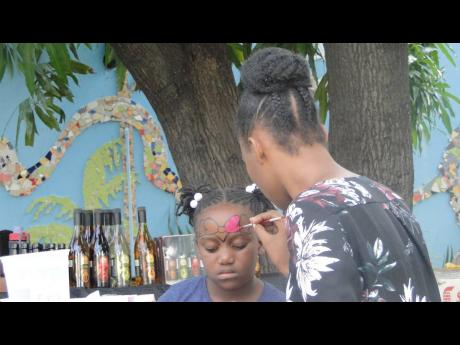Liberty Hall hosts Pre-Kwanzaa Fest
Afrocentric people gathered at the Kingston landmark Liberty Hall on King Street last Friday to celebrate Pre-Kwanzaa Fest, marking the black heritage festivities that coincide with the Christmas and New Year’s holidays.
Located at 76 King Street, Liberty Hall was a fitting venue, having been established by National Hero Marcus Garvey as the headquarters of the Kingston division of the Universal Negro Improvement Association (UNIA) in July 1923. It was a multipurpose facility that housed administrative offices and a laundromat, lunchroom, canteen, job-placement service, and cooperative bank. It evolved into an intellectual and social mecca where black people had a voice.
Today, operating as Liberty Hall: The Legacy of Marcus Garvey, among other things, it has an interactive Garvey museum and is a venue for cultural and heritage events, and on Saturday, December 20, it hosted Pre-Kwanzaa Fest.
Kwanzaa begins on December 26 and culminates on January 1 with a feast and the giving of gifts to children.
It was expected to be a day of selling of wares by entrepreneurs and craft vendors, storytelling by Opal Adisa Palmer, the staging of a play, Donny Hathaway – The Heart of Soul, by Garvey Vision Studios and the Manchester Parish Library, and a guided museum tour.
Kwanzaa was started in December 1966 as a cultural, and not religious, holiday by Maulana Karenga, a professor and department chair at California State University, Long Beach.
“The celebration of Kwanzaa is about embracing ethical principles and values so the goodness of the world can be shared and enjoyed by us and everyone,” he said.
It was established mainly for African-Americans to reconnect with their roots and heritage, and that was why an African word was selected for the holiday. Also spelt ‘Zwanza’ or ‘Zwanzaa’ and pronounced ‘Kwahn-zuh’, it originated from a Swahili phrase, ‘Matunda ya zwanza,’ which means ‘firstfruits’.
PRINCIPLES OF KWANZaa
The celebrations are underpinned by seven principles, also known as the Nguzo Saba. They are unity, self-determination, collective responsibility, cooperative economics, purpose, creativity, and faith.
Umoja (unity) builds a community that holds together. Kujichagulia (self-determination) is speaking for yourself and making choices that benefit the community. Uujamaa (cooperative economics) supports businesses that care about the community. Nia (a sense of purpose) sets goals that benefit the community. Kuuma (creativity) makes the community better and more beautiful, while Imani (faith) is the belief that a better world can be created for communities now and in the future.
There are also seven symbols of Kwanzaa. Celebrants drink from the unity cup (kikombe cha umoja) in honour of their African ancestors. The kinara (seven-candle holder) symbolises stalks of corn that branch off to form new shoots. Fruits, nuts, and vegetables that remind celebrants of the harvest fruits that nourish the people of Africa are represented by the Mazao.
The Kwanzaa symbols themselves are arranged on the Mkeka a mat made of straw or African cloth, depicting the foundation upon which communities are built. Traditionally, an ear of corn (Vibunzi) is placed on to the Mkeke for each child present.
The seven candles of Kwanzaa are collectively called Mishumaa saba. Each represents a day and is lit on that particular day. They are arranged in the Kinara – three red ones on the left, three green ones on the right, and a black one in the centre.
Red represents the blood that is shed in the struggle for freedom, black is for the colour of the people, and green symbolises the fertile land of Africa. They are the same colours as the UNIA’s, established by Marcus Garvey.
Kwanzaa celebrations were introduced to Jamaica by the late Queen Mother Mariamne Samad at her home in Havendale, St Andrew. Over the years, the observance of Kwanzaa has dwindled to just one evening, on January 1, of education and feasting. The last one was held last year.

